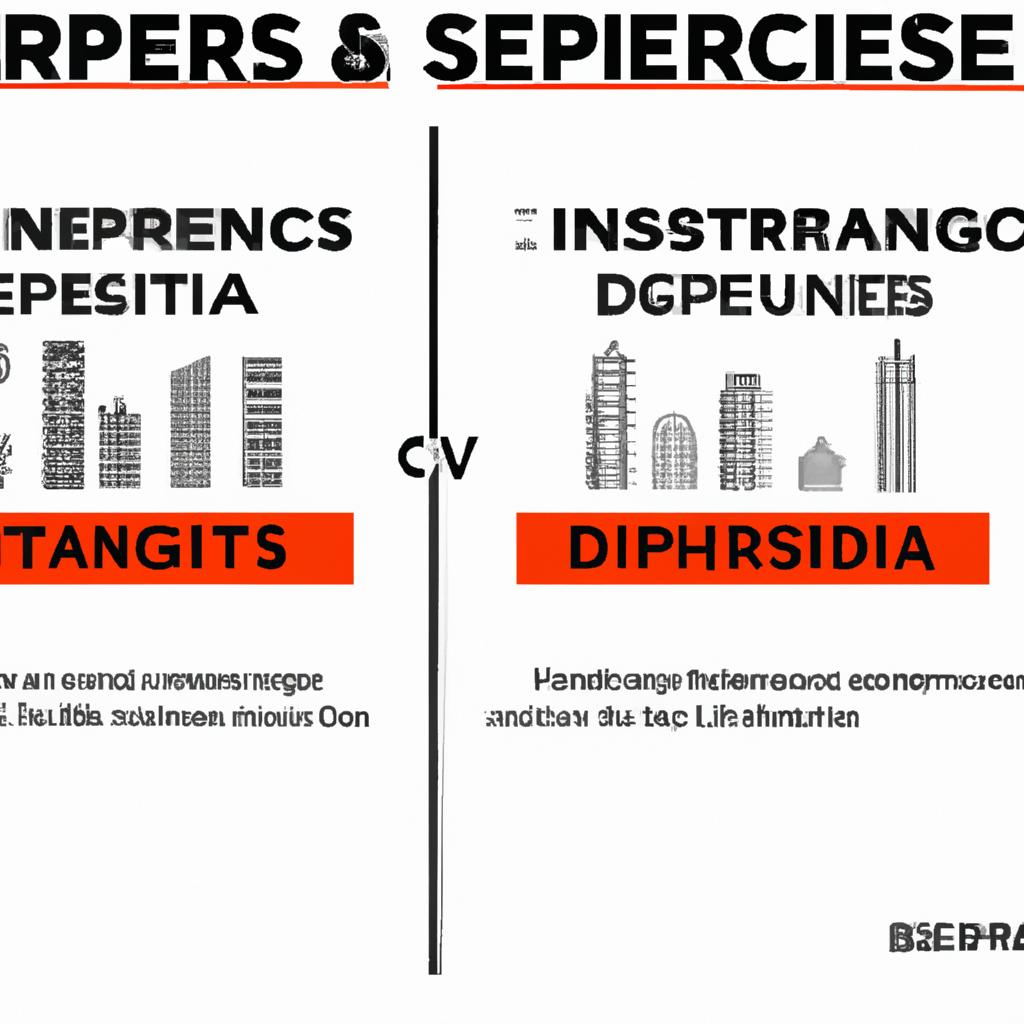When it comes to the allocation of assets among family members, the terms “per capita” and “per stirpes” can often lead to bewilderment and uncertainty. Both these methods are pivotal in estate planning and in determining inheritance, each carrying its own unique implications. Let’s delve into the differences between these two methods and examine how they can influence the division of wealth within families.
Comprehending the Distinction Between Per Capita and Per Stirpes
In the realm of estate planning and inheritance, comprehending the distinction between per capita and per stirpes distribution is vital. These two terms dictate how assets are allocated among descendants in a will or trust.
In a per capita distribution, assets are equally divided among all living descendants, irrespective of their relationship to the deceased. This implies that each individual receives an equal portion of the inheritance.
Conversely, in a per stirpes distribution, assets are divided among different family branches based on their relationship to the deceased. This implies that if a descendant has passed away, their share is equally divided among their own descendants.
It’s crucial to thoughtfully consider which distribution method aligns best with your desires and family dynamics when crafting an estate plan to ensure that your assets are allocated in a manner that aligns with your intentions.
Crucial Elements to Consider When Choosing Between Per Capita and Per Stirpes
Assessing Your Family’s Requirements
When deciding between per capita and per stirpes distribution of assets, it’s crucial to consider the unique needs of your family members. Per capita distribution ensures that each beneficiary receives an equal share of the estate, regardless of their relationship to the deceased. This might be an appropriate option if you wish to treat all beneficiaries equally or if your family structure is simple.
Conversely, per stirpes distribution divides the estate based on family lines, ensuring that assets are passed down to descendants if a beneficiary is no longer alive. This can be beneficial if you wish to keep assets within specific family branches or if you have grandchildren or great-grandchildren to consider.
Grasping Potential Tax Consequences
Another vital factor to consider when choosing between per capita and per stirpes distribution is the tax implications of each option. While per capita distribution may result in a simpler tax situation, per stirpes distribution can have benefits when it comes to minimizing estate taxes and ensuring that assets are efficiently distributed to future generations.
Consulting with a financial advisor or estate planning attorney can help you navigate the complexities of estate distribution and determine the best option based on your specific circumstances and objectives.
Advantages and Disadvantages of Per Capita Distribution in Estate Planning
Per Capita vs. Per Stirpes
When it comes to distributing assets in estate planning, the decision between per capita and per stirpes distribution can significantly impact how your heirs receive their inheritance. Understanding the advantages and disadvantages of each approach can help you make the best choice for your specific situation.
Advantages of Per Capita Distribution:
- Equal treatment: Each beneficiary receives an equal share of the estate.
- Simplicity: This method is straightforward and easy to administer.
- Flexibility: Allows for a more even distribution among living heirs.
Disadvantages of Per Capita Distribution:
- Loss of lineage: Descendants of deceased beneficiaries may miss out on their share.
- Potential inequality: Depending on family dynamics, some heirs may receive more than others.
Ultimately, the decision between per capita and per stirpes distribution should be made carefully, taking into account your family dynamics, personal values, and estate planning goals. Consult with a qualified estate planning attorney to ensure that your wishes are executed effectively and fairly.
Guidelines for Determining the Best Distribution Method: Per Capita or Per Stirpes
When determining the best distribution method for your assets, choosing between per capita and per stirpes distribution can have significant implications for your beneficiaries. Each method has its own advantages and considerations to keep in mind.
**Per Capita:**
- Divides assets equally among all living beneficiaries
- Does not consider generational differences
- Can result in unequal distribution if beneficiaries predecease the testator
**Per Stirpes:**
- Distributes assets by branch of the family, ensuring descendants of deceased beneficiaries receive their share
- Considers generational differences and treats each branch equally
- Ensures a fair distribution even if beneficiaries predecease the testator
When deciding between per capita and per stirpes distribution, it is essential to consider your family dynamics, the number of beneficiaries, and any potential future changes in your family circumstances. Consulting with a legal advisor can help you navigate these complex decisions and ensure your assets are distributed according to your wishes.
Concluding Thoughts
In conclusion, when it comes to determining how an estate should be distributed, the choice between per capita and per stirpes can significantly impact who ultimately receives what. Understanding the differences between these two methods is crucial in estate planning to ensure your wishes are executed accurately. By considering the unique circumstances of your family and seeking advice from a legal professional, you can make an informed decision that best reflects your intentions. Ultimately, whether you choose per capita or per stirpes, the goal is to ensure that your loved ones are provided for in the manner you deem appropriate.

Understanding the Difference: Per Capita vs Per Stirpes
When it comes to estate planning and inheritance, two terms that often come up are per capita and per stirpes. These terms are used to determine how assets are distributed among heirs, and understanding the difference between them is crucial for ensuring that your wishes are carried out correctly. In this article, we will delve into the meanings of per capita and per stirpes, the implications of each, and how to choose the right option for your estate planning needs.
What is Per Capita?
Per capita is a Latin term that translates to “by the head.” In estate planning, per capita distribution means that each eligible heir receives an equal share of the assets. This method is often used when the goal is to distribute assets evenly among all heirs, regardless of their relationship to the deceased or the number of living heirs.
For example, if a person has three children and chooses per capita distribution, each child would inherit one-third of the estate, regardless of whether any of the children have children of their own.
What is Per Stirpes?
Per stirpes is another Latin term that translates to “by the branch” or “by the roots.” This method of distribution takes into account the lineage of the heirs, meaning that the assets are divided among the branches of the family tree. If one heir predeceases the deceased, their share is divided equally among their descendants.
For example, if a person has three children and one of the children has passed away, leaving behind two children of their own, per stirpes distribution would ensure that each living child receives one-third of the estate, while the two grandchildren of the deceased child split their parent’s share equally.
Key Differences Between Per Capita and Per Stirpes
There are several key differences between per capita and per stirpes distribution that estate planners should be aware of:
- Equal Distribution: Per capita ensures that each eligible heir receives an equal share of the estate, while per stirpes takes into account the lineage of the heirs.
- Representation of Descendants: Per stirpes allows for representation of descendants if an heir predeceases the deceased, while per capita does not.
- Fairness: Per stirpes is often seen as a fairer method of distribution, as it ensures that assets are passed down through generations rather than being concentrated in one branch of the family.
Choosing the Right Distribution Method
Deciding between per capita and per stirpes distribution depends on your individual circumstances and goals for your estate plan. Here are some factors to consider when choosing the right method:
- Familial Relationships: Consider the relationships between your heirs and their descendants when choosing a distribution method.
- Asset Distribution: Think about how you want your assets to be distributed among your family members and whether per capita or per stirpes would be more appropriate.
- Legal Advice: Consult with an estate planning attorney to discuss the implications of each distribution method and determine which is best suited to your needs.
Case Study: Per Capita vs Per Stirpes
In a real-world scenario, let’s consider a family where a person has three children. If the person chooses per capita distribution and one of the children predeceases them, that child’s share would be divided equally among the two surviving children. However, if per stirpes distribution is chosen, the deceased child’s share would pass to their own children, ensuring that assets are passed down through generations.
Benefits and Practical Tips
Understanding the difference between per capita and per stirpes distribution is essential for effective estate planning. Here are some benefits and practical tips to keep in mind:
- Clarity: Clearly specifying your distribution method in your estate plan can help avoid confusion and potential disputes among your heirs.
- Legacy: Per stirpes distribution can help preserve your legacy by ensuring that your assets are passed down through multiple generations.
- Flexibility: Depending on your goals, you can choose the distribution method that best reflects your wishes for your estate.
Conclusion
Whether you choose per capita or per stirpes distribution for your estate plan, it is important to understand the implications of each method and how they can impact the distribution of your assets among your heirs. By taking the time to consider your family dynamics, goals, and legal advice, you can make an informed decision that aligns with your wishes and provides clarity for your loved ones.


